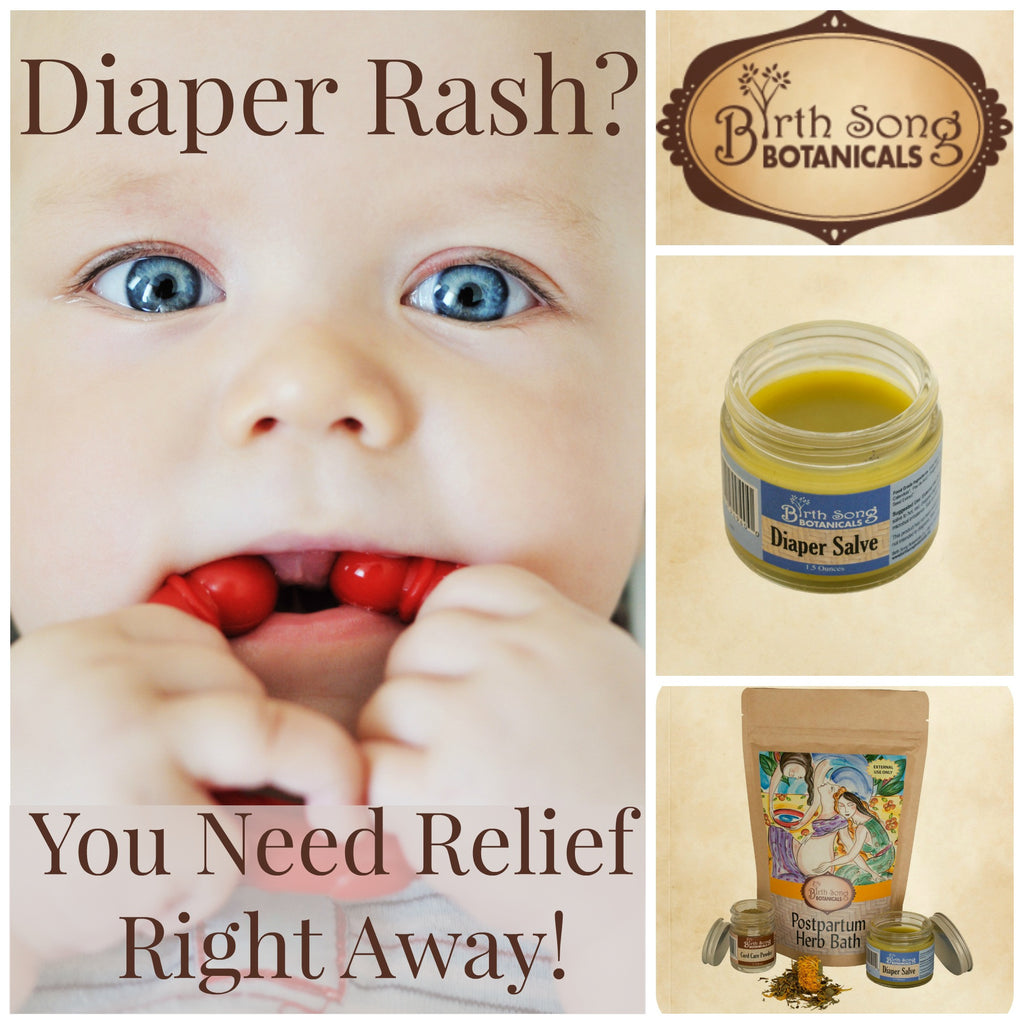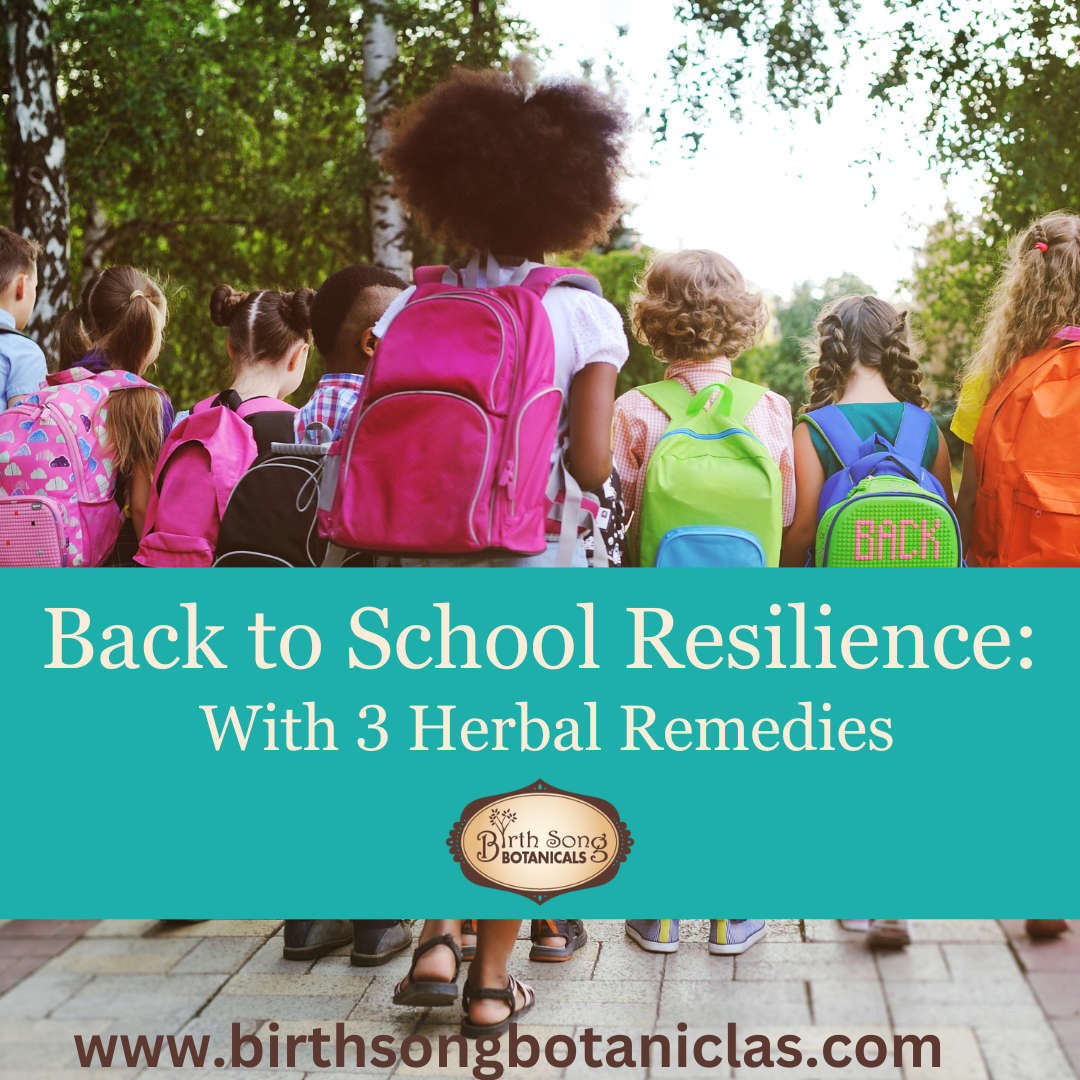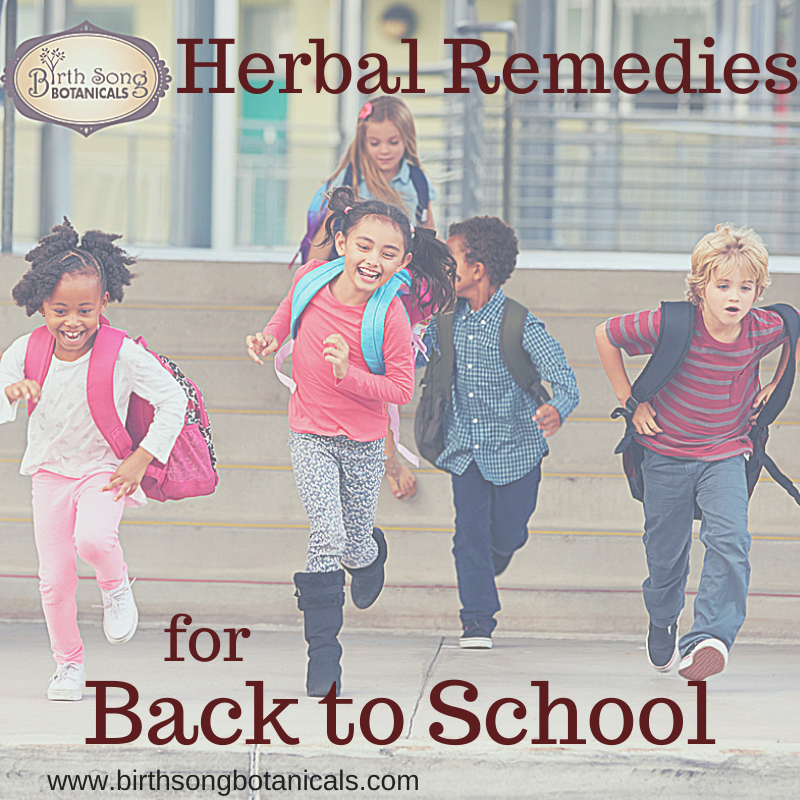Diaper Rash Remedy that Works

When you spot the first signs of a diaper rash, relief is all that’s on your mind. Judging by the inflamed, red, tender skin you see, your little one just wants to be soothed as well. If you’ve ever had skin chafing and irritated, you know how miserable it can be. You both just want a diaper rash remedy that actually works – and fast.
Quick Diaper Rash Remedy
Soothing the diaper rash quickly is important, as is finding the cause so it doesn’t return. But right now, she needs relief right away! Applying a good herbal diaper salve right away can help to soothe her bottom without trapping moisture or introducing harsh chemicals to her skin. Diaper rash creams can even harm your cloth diapers if not chosen carefully.
The herbs I’ve combined in my healing diaper rash salve are chosen for their gentle nature, anti-inflammatory actions, and tendency to correct microbial imbalance. In other words, it can help rashes caused by anything from moisture trapping to yeast.
Some of the herbs I use in the salve include:
- Oregon grape root
- Plantain
- Yarrow
- Calendula
Your cloth diapers are safe, your baby’s skin is pampered with organic ingredients, and most of all, the inflammation and discomfort is quickly soothed.
Another quick remedy can be to brew a Postpartum Herb Bath in your baby’s small bath (the kitchen sink is great), then let them air dry in the sun if possible.
Long Term Diaper Rash Relief
As soon as you see the signs of diaper rash, take some of these approaches to help sooth your baby’s bottom long term. Cutting to the source of the rash can help to bring relief sooner and prevent future outbreaks.
Adjust Diaper Changing Habits
A common source of diaper rash is just that diapers aren’t being changed frequently or properly for baby’s skin to get a break. This is especially true of paper diapers, where the baby doesn’t feel wet or let you know. It’s easy to go a long time without changing a diaper if they are happy, but it’s not good for their skin.
Diapers may need to be changed anywhere from multiple times per hour to once every hour or two, depending on your baby’s age and habits. In any case, as soon as you know baby is wet or pooped, it’s time to get them clean.
On the other hand, it’s just as easy to be overzealous when wiping. Not only are scented wipes risky for healthy bottoms, but even unscented wipes can post a problem. Think about when you go to the bathroom: all you need is paper and sometimes water. Women don’t use soap to scrub their bottoms. We just rinse and pat dry. That’s all babies need!
If you’re concerned about rashes, you may just need to change baby more frequently or wipe with just damp rags.
Change What’s Touching Baby’s Skin
If changing habits aren’t the issue, look next to what’s on baby’s skin. This is more than just a cloth vs. paper question, because even cloth diapers can wind up with buildup that might irritate skin and cause a diaper rash. As a mama, think about how your most tender places would feel if you work a stifling scented pad and scrubbed with soap regularly. What would you change first? How would you want to feel?
- Check your paper diaper ingredients for harsh chemicals and bleaching. Diapers that claim long periods of dryness means lots of chemicals are added to make that happen.
- If you use cloth, make sure they aren’t staying stinky. You might have yeast or mold or a buildup of soap on the diapers that needs to be stripped out of the diapers.
- And really, your baby’s bottom might just need some time in the fresh air! For extra healing, go for sunshine since Vitamin D helps to heal the skin.
Change What May be Causing the Rash
Finally, if external causes don’t seem to be the problem, there might be something internal to think about. Yeast and food allergies can cause diaper rashes, and they can be rather nasty.
If you have a family history of food allergies and intolerance, that’s a great place to start. Eliminate common allergens, as KellyMom outlines here, then watch to see if the rash improves. You may need to remove several at once and then add them back in, one at a time, to determine what baby isn’t tolerating well. Remember that whatever a nursing mama eats gets to baby!
Yeast can come from external issues, like too much moisture held too close to baby without being able to breathe, but it can also be exaggerated by diet, including heavy amounts of sugar and a food intolerance. Probiotics for both baby and mama are a good idea. Yeast-based rashes sometimes respond well to a probiotic paste spread onto the rashy area.




